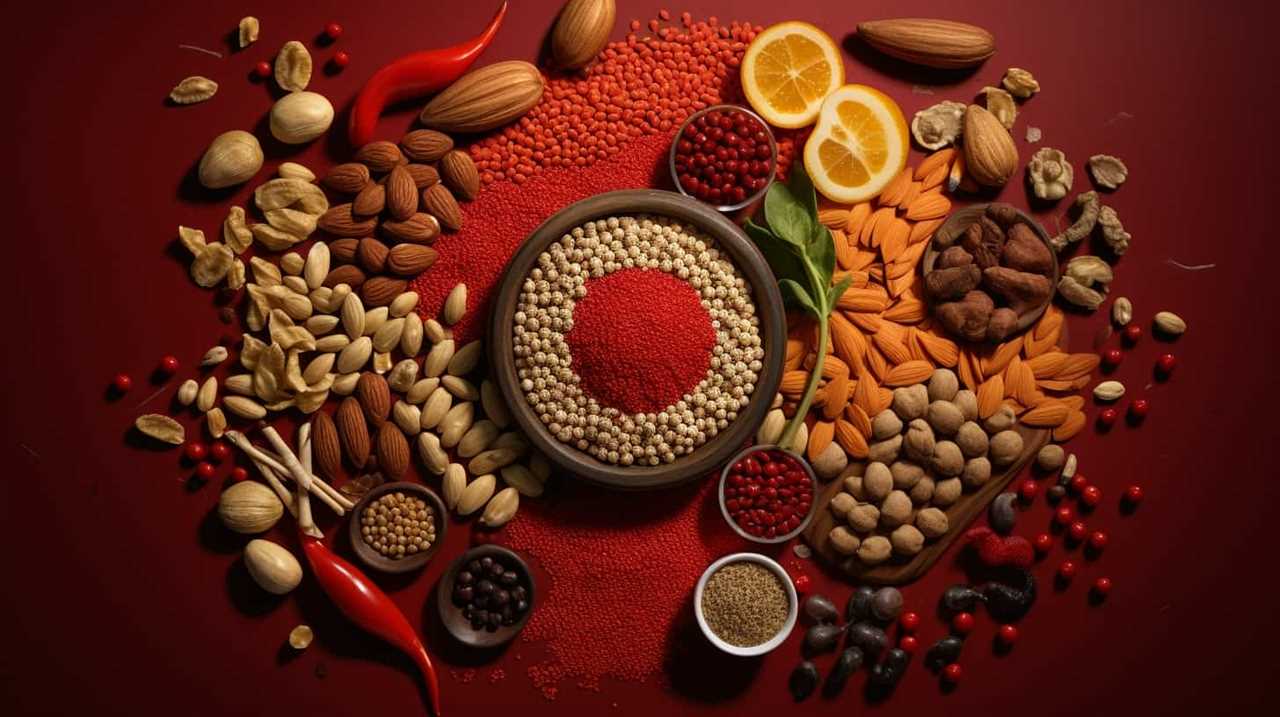Are you interested in discovering how to grow chia seeds?
We’ve delved into the world of chia seeds to uncover whether it’s a profitable venture or a money drain. Our analysis examines the market demand for chia seeds, the factors that impact profitability, and the costs involved in farming.
We also explore potential profit margins and share tips for maximizing your profits.
So, if you’re seeking liberation through a lucrative agricultural endeavor, join us on this data-driven journey into the world of chia seeds farming.

Key Takeaways
- Chia seeds farming has the potential to be a profitable venture due to the growing market demand for healthy and nutritious food choices.
- Factors such as soil quality, climate suitability, crop rotation, and integrated pest management play a crucial role in affecting the profitability of chia seeds farming.
- The initial investment for land, equipment, and infrastructure, as well as ongoing expenses for labor, irrigation systems, fertilizers, and pest control measures, need to be considered when assessing the cost-effectiveness of chia seeds farming.
- Maximizing profits in chia seeds farming can be achieved through efficient irrigation systems, the use of organic fertilizers, crop rotation, strategic planning, and continuous learning and adaptation.
Market Demand for Chia Seeds
The market demand for chia seeds is on the rise as more consumers prioritize healthy and nutritious food choices. This growing demand is fueled by the numerous benefits of incorporating chia seeds in the diet.
Chia seeds are rich in omega-3 fatty acids, fiber, protein, and antioxidants. They’ve been linked to various health benefits, including improved digestion, weight management, and reduced risk of chronic diseases.
However, the cultivation of chia seeds comes with its own set of challenges. Chia plants require specific environmental conditions, such as well-drained soil and adequate sunlight. Additionally, pests and diseases can pose a threat to chia crops.
Farmers need to overcome these challenges through proper crop management and pest control strategies to ensure successful cultivation and meet the increasing market demand for chia seeds.

Factors Affecting Chia Seeds Profitability
As we delve into the factors affecting chia seeds profitability, let’s explore how our crop management and pest control strategies play a crucial role in meeting the increasing market demand.
Achieving profitability in chia seeds farming requires careful consideration of soil quality and climate suitability. Here are some key factors to consider:
- Soil quality: Chia seeds thrive in well-drained soils with high organic matter content. Conducting regular soil tests and implementing appropriate soil amendments can optimize nutrient availability and promote healthy plant growth.
- Climate suitability: Chia seeds require a warm and dry climate, with temperatures ranging between 70 to 85 degrees Fahrenheit. Understanding the local climate patterns and selecting suitable chia seed varieties can help mitigate the risk of crop failure due to unfavorable weather conditions.
- Crop rotation: Implementing a crop rotation strategy can help prevent soil-borne diseases and reduce pest pressure. This practice can also improve soil health and fertility, leading to higher chia seed yields.
- Integrated pest management: Adopting an integrated pest management approach can minimize the use of chemical pesticides and promote environmentally-friendly pest control methods. Monitoring pest populations, implementing crop rotation, and using biological controls can help manage pests effectively while preserving the integrity of the ecosystem.
- Irrigation management: Proper irrigation practices are essential for chia seed production. Understanding the water requirements of chia plants and implementing efficient irrigation systems can ensure optimal water use and maximize crop productivity.
Cost of Chia Seeds Farming
Now let’s delve into the expenses associated with chia seeds farming to determine its overall cost-effectiveness.
Chia seeds farming presents several challenges that can impact investment requirements. Firstly, the initial investment for land, equipment, and infrastructure can be significant. Additionally, the cost of purchasing high-quality chia seeds for planting can be substantial, especially for large-scale operations.

Ongoing expenses include labor, irrigation systems, fertilizers, and pest control measures. Furthermore, chia seeds farming requires careful monitoring and maintenance to ensure optimal growth and yield, which can incur additional costs.
Balancing these investments with potential profits is crucial to assess the cost-effectiveness of chia seeds farming. By understanding the challenges and investment requirements, farmers can make informed decisions and develop strategies to maximize potential profit margins in chia seeds farming.
Potential Profit Margins in Chia Seeds Farming
We frequently evaluate the potential profit margins in chia seeds farming to determine its viability as a lucrative venture for us. Chia seeds cultivation comes with its fair share of challenges, but the future growth prospects for chia seeds farming make it an attractive option.
Here are some key points to consider:

- High demand: The increasing popularity of chia seeds as a superfood has led to a rise in demand, creating potential opportunities for farmers to earn substantial profits.
- Price stability: Chia seeds have shown a steady price trend over the years, ensuring a stable income for farmers.
- Diverse market applications: Chia seeds aren’t only consumed as a dietary supplement but also used in various industries like cosmetics and textiles, expanding the market potential.
- Sustainability: Chia seeds require less water and pesticides compared to other crops, making it an environmentally friendly choice.
- Export potential: With the global market for chia seeds growing, there’s ample opportunity for farmers to tap into international markets, further boosting profit margins.
Considering these factors, chia seeds farming holds promising profit margins and a bright future for those willing to overcome the challenges and seize the opportunities.
Tips for Maximizing Chia Seeds Farming Profits
To maximize chia seeds farming profits, it is essential that we carefully implement strategic techniques. By employing yield optimization strategies and sustainable farming practices, we can ensure maximum productivity and profitability.
One effective strategy is to focus on soil health and fertility. Ensuring that the soil is rich in nutrients and well-drained can significantly boost chia seed yield. Additionally, implementing crop rotation and cover cropping techniques can help prevent soil erosion and maintain soil fertility in the long term.
Another key aspect to consider is proper irrigation management. Chia seeds require adequate moisture for germination and growth, but overwatering can lead to root rot and decreased yields. Utilizing efficient irrigation systems and monitoring soil moisture levels can help optimize water usage and maximize crop productivity.

Lastly, practicing integrated pest management (IPM) techniques can minimize the use of harmful pesticides and reduce production costs. Implementing biological control methods, such as introducing beneficial insects, can effectively manage pests while maintaining ecological balance.
By adopting these strategic techniques, we can enhance chia seeds farming profits while promoting sustainable agricultural practices.
| Yield Optimization Strategies | Sustainable Farming Practices |
|---|---|
| Focus on soil health and fertility | Implement crop rotation and cover cropping |
| Proper irrigation management | Utilize efficient irrigation systems |
| Practice integrated pest management (IPM) | Promote biological control methods |
Conclusion
In conclusion, chia seeds farming can be a profitable venture if approached with careful planning and consideration of market demand and cost factors.
However, success in this industry relies heavily on maximizing profit margins through efficient farming practices.

For example, a hypothetical case study of a chia seeds farmer who implemented sustainable irrigation methods and optimized seed harvesting techniques achieved a significant increase in profits.
By staying informed and adapting to market trends, farmers can ensure that chia seeds farming remains a lucrative business opportunity.















